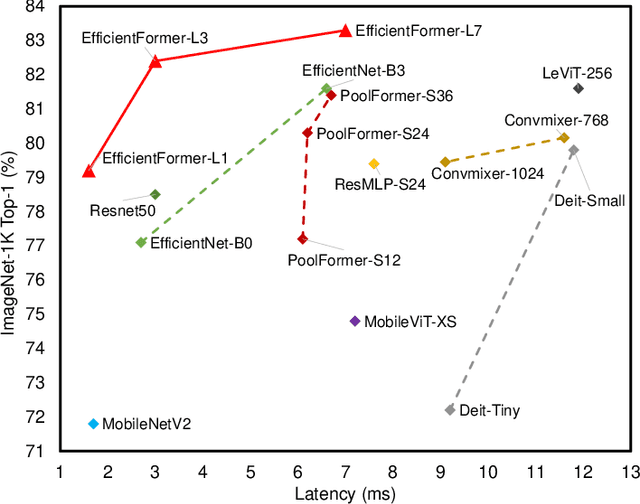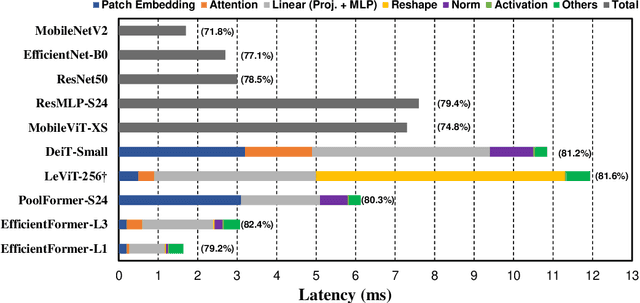Eric Hu
Command A: An Enterprise-Ready Large Language Model
Apr 01, 2025Abstract:In this report we describe the development of Command A, a powerful large language model purpose-built to excel at real-world enterprise use cases. Command A is an agent-optimised and multilingual-capable model, with support for 23 languages of global business, and a novel hybrid architecture balancing efficiency with top of the range performance. It offers best-in-class Retrieval Augmented Generation (RAG) capabilities with grounding and tool use to automate sophisticated business processes. These abilities are achieved through a decentralised training approach, including self-refinement algorithms and model merging techniques. We also include results for Command R7B which shares capability and architectural similarities to Command A. Weights for both models have been released for research purposes. This technical report details our original training pipeline and presents an extensive evaluation of our models across a suite of enterprise-relevant tasks and public benchmarks, demonstrating excellent performance and efficiency.
xLAM: A Family of Large Action Models to Empower AI Agent Systems
Sep 05, 2024



Abstract:Autonomous agents powered by large language models (LLMs) have attracted significant research interest. However, the open-source community faces many challenges in developing specialized models for agent tasks, driven by the scarcity of high-quality agent datasets and the absence of standard protocols in this area. We introduce and publicly release xLAM, a series of large action models designed for AI agent tasks. The xLAM series includes five models with both dense and mixture-of-expert architectures, ranging from 1B to 8x22B parameters, trained using a scalable, flexible pipeline that unifies, augments, and synthesizes diverse datasets to enhance AI agents' generalizability and performance across varied environments. Our experimental results demonstrate that xLAM consistently delivers exceptional performance across multiple agent ability benchmarks, notably securing the 1st position on the Berkeley Function-Calling Leaderboard, outperforming GPT-4, Claude-3, and many other models in terms of tool use. By releasing the xLAM series, we aim to advance the performance of open-source LLMs for autonomous AI agents, potentially accelerating progress and democratizing access to high-performance models for agent tasks. Models are available at https://huggingface.co/collections/Salesforce/xlam-models-65f00e2a0a63bbcd1c2dade4
Salesforce CausalAI Library: A Fast and Scalable Framework for Causal Analysis of Time Series and Tabular Data
Jan 25, 2023Abstract:We introduce the Salesforce CausalAI Library, an open-source library for causal analysis using observational data. It supports causal discovery and causal inference for tabular and time series data, of both discrete and continuous types. This library includes algorithms that handle linear and non-linear causal relationships between variables, and uses multi-processing for speed-up. We also include a data generator capable of generating synthetic data with specified structural equation model for both the aforementioned data formats and types, that helps users control the ground-truth causal process while investigating various algorithms. Finally, we provide a user interface (UI) that allows users to perform causal analysis on data without coding. The goal of this library is to provide a fast and flexible solution for a variety of problems in the domain of causality. This technical report describes the Salesforce CausalAI API along with its capabilities, the implementations of the supported algorithms, and experiments demonstrating their performance and speed. Our library is available at \url{https://github.com/salesforce/causalai}.
EfficientFormer: Vision Transformers at MobileNet Speed
Jun 02, 2022



Abstract:Vision Transformers (ViT) have shown rapid progress in computer vision tasks, achieving promising results on various benchmarks. However, due to the massive number of parameters and model design, e.g., attention mechanism, ViT-based models are generally times slower than lightweight convolutional networks. Therefore, the deployment of ViT for real-time applications is particularly challenging, especially on resource-constrained hardware such as mobile devices. Recent efforts try to reduce the computation complexity of ViT through network architecture search or hybrid design with MobileNet block, yet the inference speed is still unsatisfactory. This leads to an important question: can transformers run as fast as MobileNet while obtaining high performance? To answer this, we first revisit the network architecture and operators used in ViT-based models and identify inefficient designs. Then we introduce a dimension-consistent pure transformer (without MobileNet blocks) as design paradigm. Finally, we perform latency-driven slimming to get a series of final models dubbed EfficientFormer. Extensive experiments show the superiority of EfficientFormer in performance and speed on mobile devices. Our fastest model, EfficientFormer-L1, achieves 79.2% top-1 accuracy on ImageNet-1K with only 1.6 ms inference latency on iPhone 12 (compiled with CoreML), which is even a bit faster than MobileNetV2 (1.7 ms, 71.8% top-1), and our largest model, EfficientFormer-L7, obtains 83.3% accuracy with only 7.0 ms latency. Our work proves that properly designed transformers can reach extremely low latency on mobile devices while maintaining high performance
 Add to Chrome
Add to Chrome Add to Firefox
Add to Firefox Add to Edge
Add to Edge